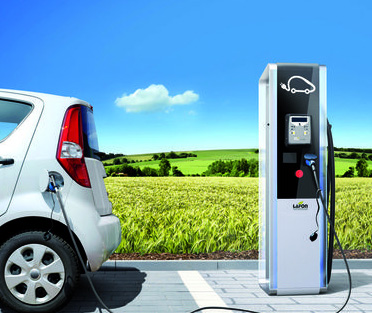For electric mobility, all indicators have turned green in France. With more than 400,000 electric vehicles by the end of 2020, a tripling of sales over the past three years, and the French government’s desire to accelerate the deployment of public and private charging stations, the electromobility market is developing rapidly. The question of how to integrate a growing number of these vehicles into the electrical system is becoming increasingly important. What if the growth of electric mobility, rather than a constraint, could represent an opportunity for the electric grids of tomorrow? Several large-scale demonstrators are taking shape in France to deploy a “smart” electric mobility that contributes to the country’s energy transition.

As electricity grids are transformed and digitized to integrate a growing proportion of “intermittent” renewable energies, multiple experiments are conducted around the control of electric vehicle recharging: “smart charging” to recharge the vehicle at the right time for the grid, “Vehicle to Grid” (V2G) to allow vehicle batteries to send electricity back to the grid when needed, or even “Vehicle to Building” to make it possible to consume all the energy produced on site…
Several innovative projects are described in a recent study published by Think Smartgrids, on the contribution of electric mobility to the energy transition and the flexibility of electricity networks.
The aVEnir demonstrator, a project supported by ADEME as part of the “Investissements d’Avenir” program and managed by the French electricity distributor Enedis, aims to facilitate the development of electric mobility on a large scale and its integration into the electricity grid.
With six experimental phases, from 2019 to 2022, the aim is to test the various smart recharging control solutions, optimize the costs of inserting electric vehicles into the grid, validate user acceptance in the field, and finally, assess the opportunity to use electric vehicles as a lever for flexibility, at various local grid levels.
While 90% of charging takes place at home, controlling charging can also be an interesting opportunity to reduce electricity bills for consumers. About 40% of electric vehicle users already use smart charging in France, but Enedis’ Linky smart meter will soon allow consumers to activate charging control, to charge their vehicles at the lowest cost per kWh, to monitor consumption in real time or to keep track of the energy consumed and the energy reinjected into the grid in a separate way. In the context of a self-consumption home, smart meters also allow the vehicle’s battery to be used to store the electricity produced in excess by the solar panels during the day, and thus allow the consumer to save on the cost of recharging the vehicle.
As part of the European INCIT-EV project (Large demonstratIoN of user CentrIc urban and long-range charging solutions to boosT an engaging deployment of Electric Vehicles in Europe), coordinated by carmaker Renault, Enedis and Atos are also working on a dynamic induction charging system in the urban area of Paris.
Induction charging, which relies on electromagnetic coupling between two coils to recharge the battery (one under the road and the other under the vehicle’s chassis), is changing the paradigm of the electric vehicle. Indeed, the reduction in the size of the battery reduces its price and its carbon footprint. In addition, the vehicle’s immobilization disappears, with the terminal as well as the parking space dedicated to it freeing up urban space and preparing the advent of shared and autonomous vehicles.
Achieving CO2 reduction targets will require massive electrification of vehicles, and the entire value chain will have to be decarbonized, starting with the electricity used to recharge vehicles. The electrical system will have a major role to play in achieving this large-scale deployment. Enedis, the French grid operator, estimates that 10% of their total investments will be dedicated to electric mobility over the next 15 years. Aware that the nature of the challenges to be met also varies greatly depending on the geographical area, the French smart grids industry is working to develop innovative local solutions to optimize the integration of electric vehicles in each region.



